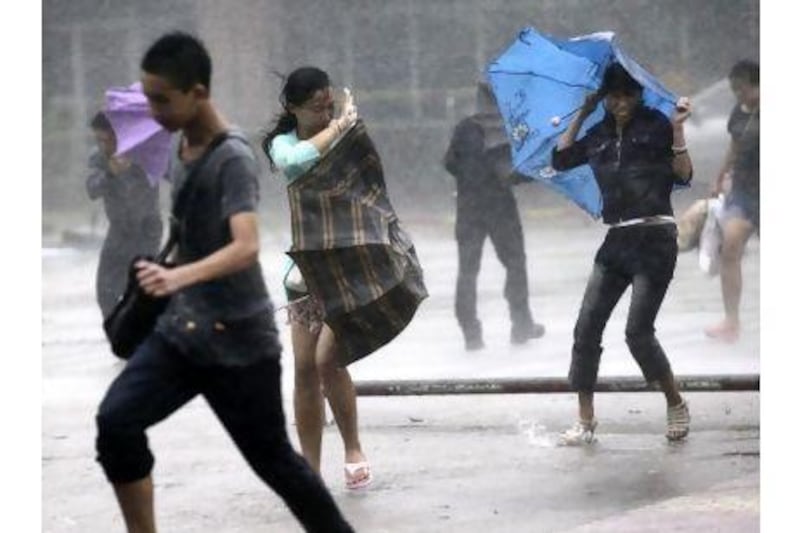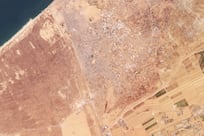BEIJING // Typhoon Nesat made landfall in China yesterday, battering the country with heavy winds and torrential rain.
The storm struck shortly after bringing Hong Kong to a virtual standstill and leaving a trail of death and destruction in the Philippines.
About 300,000 people were moved from at-risk areas of the island of Hainan and thousands of fishing boats were kept in port as schools and businesses closed and streets became flooded.
In Hong Kong, one of Asia's top financial centres, the stock exchange was suspended yesterday.
Trams were also stopped, buses and subway services cut back and most offices and many shops failed to open when the typhoon passed over. Reports described the former British colony as a ghost town.
Scores of trees were knocked over by winds gusting at more than 120kph but damage in Hong Kong was light compared with the Philippines, where the death toll reached 35 with another 45 missing.
Most deaths occurred in and around Manila, while in the countryside 103,000 tonnes of rice was damaged at an estimated cost of more than US$50 million (Dh183.7m), according to reports from Reuters quoting the Philippines' National Food Authority.
Nesat arrived almost a year after Typhoon Megi killed dozens in the Philippines and Taiwan, and two years after more than 900 died in the Philippines from Tropical Storm Ketsana.
The typhoon gusted at up to 170kph on Luzon island.
More than one million people on Luzon remained without power yesterday, although authorities had started to clear roads of debris and fallen trees and many businesses and schools had reopened.
Much of the flooding resulted from the breaching of sea walls in Manila Bay.
With the Hong Kong Observatory having ranked the storm an eight, the second-highest figure on a scale of one, three, five, eight and 10, most offices in the special administrative region of China did not open yesterday and the majority of government departments were shut.
At least 25 people were treated at public hospitals for injuries, although there were no reports of deaths.
"It's deadly quiet outside, like a dark, wet ghost town," Gavin Parry, a brokerage managing director who walked to work yesterday, told Bloomberg. He added that there were a few minibuses operating but no public buses, and taxis were asking for a HK$100 (Dh47.1) surcharge.
Another member of Hong Kong's finance community, Frank Huang, head of trading for a securities company, told Bloomberg that traffic was lighter than usual.
"I have to come back to work as trading is still going on in other markets," he said.
Others turned up for work only to find their offices had closed, while nearly 400 flights from the international airport were cancelled, delayed or diverted.
In nearby Macau, a special administrative region of China like Hong Kong, Reuters reported that businesses, shops and many transport services were also inactive.
Ferry services between Macau and Hong Kong were cancelled, although they restarted after Nesat left and continued its journey across the South China Sea towards Hainan.
Nesat made landfall at Wenchang in eastern Hainan at 2.30pm, according to the official Chinese Xinhua news agency, making it the 17th and strongest typhoon to hit China this year.
Hainan suffered more severely in October last year, when it was hit by its worst autumn rains for five decades.
About 300mm of rain fell during a week of downpours that submerged five villages, forced 132,000 people from their homes and left two others missing.






